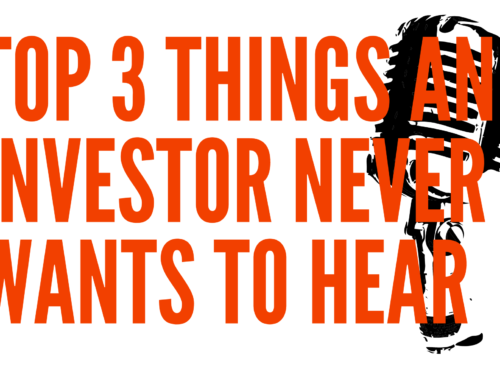Can you provide the essentials to verifying this is the right niche for you to be in?
Welcome back to the After the Pitch podcast, I’m you’re host Adrian T. Marable. Now, a niche is defined a segment of a larger market that can be defined by its own unique needs, preferences, or identity that makes it different from the market at large. I know this was a lot of words. This was Google’s definition, not mine! My definition is a niche the small space in commerce your product or service resides and provides optimal value to a specific type of customer. Hope that makes more sense.
Here’s an example. Your business is in the retail industry. In that industry, you’re a shoe company. Going a step deeper, you sell women’s shoes. Matter of fact, let’s take another step deeper, you sell athletic women’s shoes. That’s your niche product and your niche customer is likely women athletes. Make sense? When working with investors, it’s important to explain why you’re working on selling to the right niche. Let’s talk about three of the best steps to do that.
Find a Niche
Don’t think you can start off with serving every person. It’s important to start with a target market. The worst idea I’ve heard from startup founders is the thought their target market is EVERYONE. Though you may be able to sell to everyone, this does not mean your target market is everyone.
Remember, Amazon started off as an online bookstore. Apple started with the Apple I personal computer.
Picking 1-2 niches to focus on allows you to create focus in how you start and grow your company.
Pick Niches you have a passion about or you understand the most. Research to see if they’re able to meet your customer’s need (and price point). Understand how they want to be reached. I usually work on the right side of a business model canvas to brainstorm and document research.
I like to use websites like:
- Facebook Audience Insights
- Quora
- The Federal Bureau of Labor Statistics website
- Google Trends
- Google Adwords
To find the potential size of certain niches, what is going on in their world, and what are they interested in.
Identify the Niches’ Market Opportunity
For market size, I tend to use Google Keyword Planner to search volume. If you find key niches having a 1K-10K per month search volume, you’re on the right track. Any less than this probably means there’s not much of a market for you. Any higher than 10k may mean it may be too hard to build an online foothold in this area.
Also look at competition. Find companies who do something similar and estimate the size. For competition, you should be looking for a low-medium competitor level. This will help you build a moat (or unique value) around your business.
Test the Market
Now you have picked one or two niches, it’s time to test if these are actually the right ones to move forward with.
Online ads is currently the most popular option. Whether it’s Google, Facebook, Instagram Ads, etc., the benefit is that you’ll receive feedback faster with real-time data.
Physical Ads also work but can be costly depending on your methods. This however allows you reach a very particular market but you may see slower or no data results.
Using tools like google trends, it’s important to find the right messaging that fits your company’s niche and peaks the interest of the niche market you are in. A/B testing has proven to be a great way to test. Taking the same product and testing it with different messages, images, and colors. Data results will be king in certifying this is the right niche for you.
There could be hundreds or thousands of niches you can take advantage of but focusing on one or two areas is key. This is the best way to stay focused in building your startup and providing an investor the confidence they need to invest in your business. Decide on your niche or niches before moving forward on your startup journey. That’s all for today. I’m Adrian Marable, your host.
Until next time and remember, “There are riches in niches!”







Leave A Comment